
Become a member
Join today and help protect nature, beauty and history – for everyone, for ever. Enjoy access to more than 500 places with National Trust membership.
Awe-inspiring Anglo-Saxon royal burial site, home to one of the greatest archaeological discoveries of all time.
Tranmer House, Sutton Hoo, Woodbridge, Suffolk, IP12 3DJ
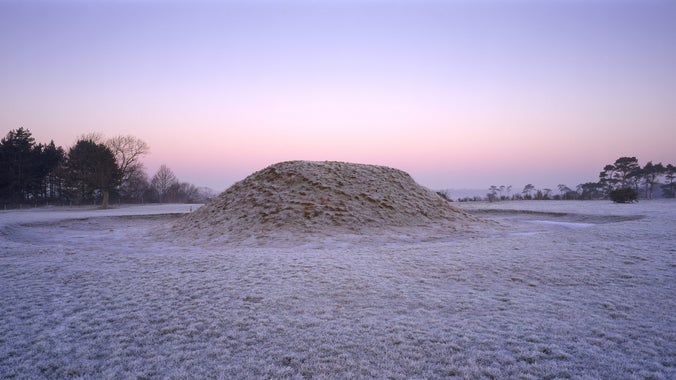
| Asset | Opening time |
|---|---|
| Tranmer House & Exhibition Hall | 10:30 - 15:30 |
| Café | 10:00 - 16:00 |
| Shop | 10:00 - 16:00 |
| Estate walks | 10:00 - 16:00 |
| Bookshop | 11:00 - 16:00 |
| Tower | 10:00 - 16:00 |
| Ticket type | With Gift Aid | Without Gift Aid |
|---|---|---|
| Adult (18+) | £18.70 | £17.00 |
| Child (5-17) under 5s free | £9.40 | £8.50 |
| Family (2 Adults and up to 3 children) | £46.80 | £42.50 |
| 1 adult, 2 children | £28.10 | £25.50 |
| Group (Adult 18+) | £16.15 | |
| Group (Child 5-17) | £8.08 |
| Ticket type | With Gift Aid | Without Gift Aid |
|---|---|---|
| Adult (18+) | £19.80 | £18.00 |
| Child (5-17) under 5s free | £9.90 | £9.00 |
| Family (2 Adults and up to 3 children) | £49.50 | £45.00 |
| 2 adults and up to 3 children | £29.70 | £27.00 |
| Group (Adult 18+) | £17.10 | |
| Group (Child 5-17) | £8.55 |
Audio-described guides for blind and partially sighted people available from Visitor Welcome that takes in the courtyard, Tranmer House, the Royal Burial Ground and the High Hall exhibition.
Our large second-hand bookshop is located in the courtyard opposite the ship sculpture and offers a range of titles including fiction, non-fiction and children’s books. Donations of books are always welcome.
King’s River Café is open every day serving a selection of hot and cold drinks, snacks and light bites. Indoor and outdoor seating available. Keepers Café next to Tranmer House is open during peak times, including school holidays.
We have a main car park with blue badge parking spaces at the front. An overflow car park is available for peak times. Motorhomes should be parked in the overflow carpark. Coach bays are available in the main carpark for pre-booked coaches.
Cycle parking is located at the front of the Visitor Welcome building. There are no cycle paths on the Sutton Hoo estate, but you can book an Eezybike to explore more of the local area. Book a bike, bring your own helmet and explore nearby Woodbridge, Rendlesham or Orford.
Cycle parking - more informationDogs on short leads allowed on all estate walks, the cafe, gift shop and second-hand bookshop. Assistance dogs only in the High Hall exhibition and Tranmer House
We offer plenty of activities for all the family including dressing up, arts and crafts, family trails and den-building. An outdoor playground is located behind the High Hall exhibition building. High chairs aavailable in Kings River Cafe. Baby change in male and female toilets in shop, unisex toilet behind High Hall and accessible toilet in Tranmer House.
Free guided tours of the Royal Burial Ground are available daily from February-mid November. Weekend tours only during winter season. Limited tickets available from the Visitor Welcome team when you arrive.
Our gift shop is well-stocked with a range of books, homeware, toys and accessories from both the National Trust and local crafts people.
Toilets, including accessible toilets, are located behind the High Hall exhibition, in the shop and in Tranmer House.
Blue Badge parking. Accessible toilets. Uneven paths. Mobility scooters and wheelchairs available to hire for free.
Accessible paths to Tranmer House and the Royal Burial Ground
Accessible toilets located in the shop/cafe building, Tranmer House and at the side of the High Hall exhibition
Braille map located in the main courtyard
Large print guides available in Tranmer House and the High Hall exhibition
Please pre-book with the Visitor Welcome team by calling 01394 389714 or emailing SuttonHooWelcome@nationaltrust.org.uk
Please pre-book with the Visitor Welcome team by calling 01394 389714 or emailing SuttonHooWelcome@nationaltrust.org.uk
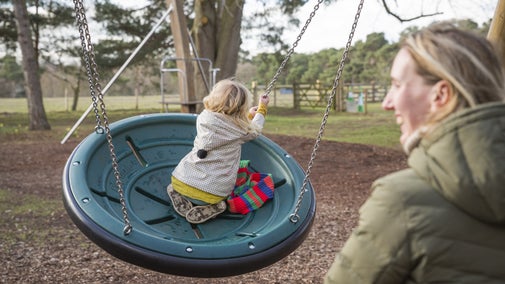
Find out all about our new exhibition for 2025, which explores the real story behind the Netflix's hit film, The Dig.

See what events may be happening during your visit or what's coming up at Sutton Hoo.
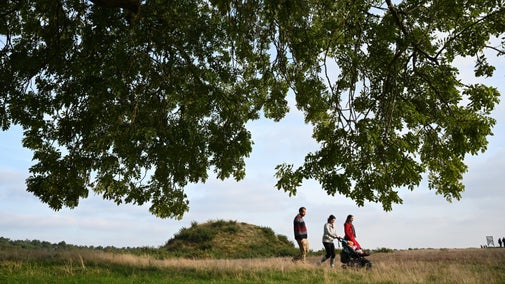
We are committed to making Sutton Hoo accessible for all our visitors.

Sutton Hoo is a three pawprint rated place. With 245 acres to explore, there are lots of adventures to be had with your pooch. Here's all the information you need to make your visit a happy one.

Whether you want to visit Sutton Hoo with a club or society, with a group of friends or as a school or college, we can accommodate you. Find out everything you need to know here.

Anglo-Saxon burial ground, home to one of the greatest archaeological discoveries of all time and with a 17-metre high viewing tower.
Exhibition exploring the world of the Anglo-Saxons, featuring replica and original objects discovered at Sutton Hoo.
Former home of Edith Pretty, built in 1910. Displays exploring the archaeological work that has taken place at Sutton Hoo.
King’s River Café (in main courtyard) is open every day, serving a tasty selection of hot and cold drinks, light meals, snacks and cake.
Shop with gifts, books, homeware and a unique range of Anglo-Saxon inspired designs. Second-hand bookshop.
Mixed coniferous and deciduous woodlands, with a range of walking routes and views across the River Deben, towards Woodbridge.
Stay in one of our apartments in the former home of Edith Pretty, Tranmer House.
There's something for the whole family to enjoy at Sutton Hoo this winter.

Discover the real stories of the people that inspired Netflix's hit film, The Dig, at our new exhibition this year.

See all the events coming up at Sutton Hoo.

There are lots of different family activities available to help you explore and discover Sutton Hoo. However you choose to spend your day with us, your adventure starts here.

Explore the atmospheric 7th-century Royal Burial Ground at Sutton Hoo and discover the history and mystery of what lay beneath the earth at this special place.

Discover more about the people behind the archaeological investigations at Sutton Hoo.

Delve into the world of Anglo-Saxons and discover the treasures unearthed and the story of this world-famous site.

Book a bike and bring your helmet along to explore the local area around Sutton Hoo. Head to the Sutton Hoo Ship's Company in Woodbridge to see the replica ship take shape or go further afield to Rendlesham and Orford.

Discover Sutton Hoo's Royal Burial Ground, and its varied history, on a circular half-mile trail, for personal mobility vehicles, wheelchairs and pushchairs.

Explore the estate surrounding the Anglo-Saxon royal burial site at Sutton Hoo on the circular River View Walk, which runs through woodland and offers views across the River Deben.

Explore the estate of Sutton Hoo on the Pinewood Walk, an easy circular woodland walk that takes in views across the River Deben.

Discover the Anglo-Saxon burial site, where a 7th-century ship was uncovered, as well as the woodland wildlife that surrounds the ancient site on the circular Sutton Hoo woodland walk.

Explore the Anglo-Saxon history of Sutton Hoo on this easy circular walk exploring the area where the ancient Great Ship Burial was discovered, as well as the surrounding woodland.

Enjoy a bite to eat after you've explored the grounds, or search for your own treasure to bring home from the shop.

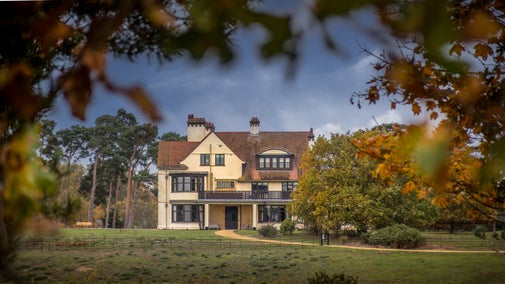
A period apartment with a wooden balcony, surrounded by Anglo-Saxon history.

A spacious apartment with views of the famous Anglo-Saxon burial mounds at Sutton Hoo.

A cosy two-bedroom apartment in Tranmer House, set in 245 acres of fascinating history.
Get out in the fresh air, re-connect with nature, stretch your legs and walk your way to better wellbeing on one of our volunteer-led group walks.
The Dig: A Story Unearthed is a new temporary exhibition sharing the stories of the real people that inspired the hit Netflix film, The Dig, and feature some of the original props and costumes from the film.
Bring your little ones for a gentle stroll around the landscape along our pram and pushchair friendly pathways.
Explore Sutton Hoo through the lens of your camera and discover top tips from professional photographer Phil Morley on developing your landscape photography skills.
Explore Sutton Hoo through the lens of your camera and discover top tips from professional photographer Phil Morley on developing your landscape and close-up photography skills.
Explore Sutton Hoo through the lens of your camera and discover top tips from professional photographer Phil Morley on developing your close-up photography skills.
Join us for quiet hour as we turn down the sounds for those who would enjoy a more peaceful and relaxed visit.
Bring your little ones along to Sutton Hoo's outdoor toddler group - Little Hoo-ligans
This hauntingly beautiful 270 acre estate, with far-reaching views over the River Deben, is home to one of the greatest archaeological discoveries of all time.
Walk around the Royal Burial Ground and enjoy vistas from the 17-metre viewing tower to discover the history of the ship burial of an Anglo-Saxon king and his treasured possessions, find out about the archaeological work that took place here in Tranmer House, the former home of Edith Pretty, and visit the High Hall exhibition to see replica and original objects.
Find out what was discovered beneath the earth in a quiet corner of Sutton Hoo in Suffolk, and why the Anglo-Saxon find was so significant.

The Dig is a film by Netflix which was released in 2021 - but did you know it was inspired by a true story? Read on to discover more.

Think of archaeology at Sutton Hoo and you'll almost certainly think of the famous discoveries made in 1939. But there's a long history of archaeology here, from professional experts to treasure seekers.

Just who were the Anglo-Saxons? And why did they choose Sutton Hoo as a burial site?

Discover the work carried out on archive images of the Great Ship Burial excavation. These images, captured in 1939, helped record this fascinating discovery.

The National Trust has joined forces with Time Team on a new two-year research project at Sutton Hoo.
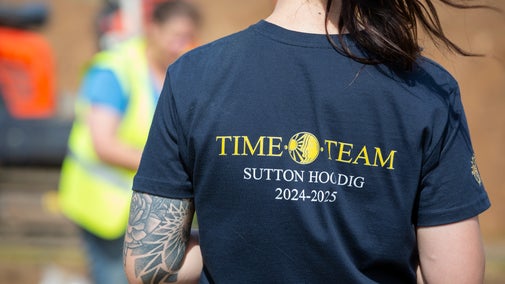
Endangered songbirds and wildflowers are benefitting from woodland management techniques at Sutton Hoo.
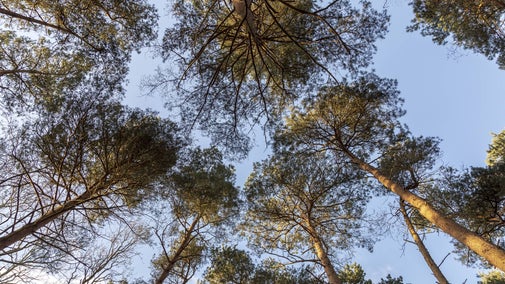
Three of our joinery apprentices are honing their heritage craft skills in a ‘once-in-a-lifetime’ project. They'll be working on building a full-size replica of the famous Anglo-Saxon ship unearthed at Sutton Hoo in Suffolk.

Discover the important work that the National Trust carries out at Sutton Hoo in Suffolk, from improving the woodland for wildlife to studying the geophysics of the land.

Take a new look at the historic site through updated interpretation to release stories from the past. Discover how the work was funded.
Want to volunteer with the National Trust? Find out how to apply and the kind of roles you might carry out.


Join today and help protect nature, beauty and history – for everyone, for ever. Enjoy access to more than 500 places with National Trust membership.
By sharing your email address you’re agreeing to receive marketing emails from the National Trust and confirm you’re 18 years old or over. Please see our for more information on how we look after your personal data.